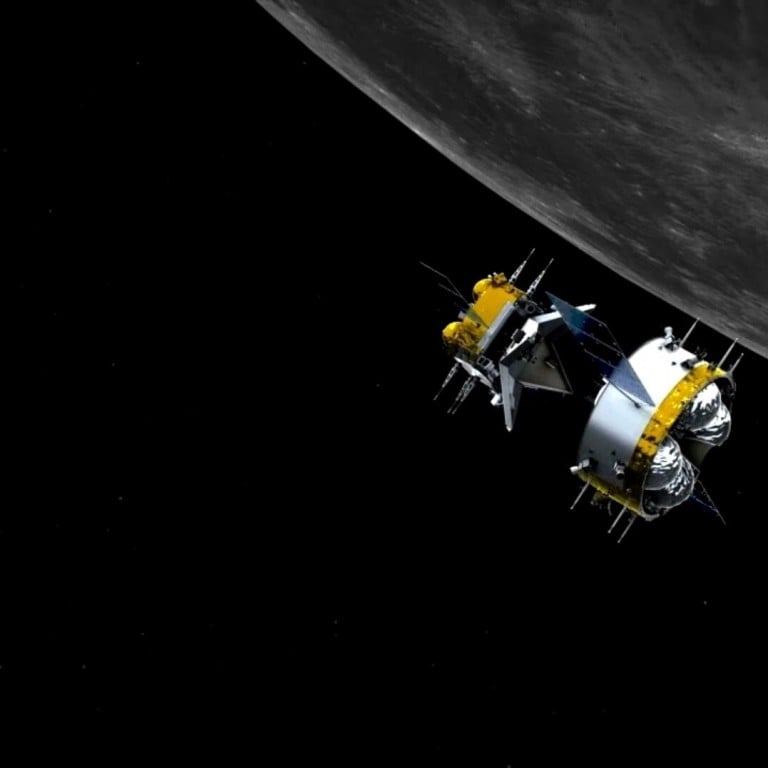
China’s Chang’e 5 moon mission takes another step closer to earth
- Spacecraft completes first of two changes in orbit that will allow it to break free of the moon’s gravity
- Mission collected rocks from the lunar surface for the first time in more than four decades
China’s latest lunar mission has moved one step closer to completion as the Chang’e 5 spacecraft completed the first of two alterations to its orbit around the moon, raising expectations of an imminent return to earth.
After spending six days orbiting the moon, the combined orbiter and return vehicles successfully changed course from a near-circular orbit to an elliptical orbit on Saturday, according to Chinese state news agency Xinhua.
The second alternation is expected to allow the spacecraft to break free from the moon’s pull and set it on a path towards earth. Chang’e 5 is expected to land in Inner Mongolia some time between Tuesday and Thursday.
The mission is the first to bring rocks from the moon to earth in more than four decades, and China will become the third country to do so after the United States and Soviet Union.
After launching on November 24 from the southern island of Hainan, it took almost five days of travel before Chang’e 5 came close to the moon.
On December 1, the spacecraft’s moon lander and ascender vehicle landed near the peak of Mons Rümker, a mountain in the Oceanus Procellarum (Ocean of Storms) region of the moon.
China dodges speeding space junk bullet after Chang’e 5 moon mission
The lander collected about 1.5kg (3.3 pounds) of rock and dirt from the surface using a robotic arm and drilled down about 2 metres (6.6ft) to collect 500 grams of underground samples.
The US Apollo programme brought 382kg of lunar rocks and soil back to earth over six missions, while the Soviet Union retrieved a little over 300 grams of lunar samples from three unmanned missions.
There were some minor hiccups after the lift-off from the moon on December 3. A network of satellite stations in China, Argentina, Namibia, and the Pacific Ocean was tasked with monitoring the ascender vehicle carrying the lunar samples.
Docking done, China’s Chang’e moon mission is ready to return to Earth
However, with so many stations tracking the spacecraft, its communication capacity was taken to the limit, causing a temporary halt in live-stream images from its on-board images, according to Chinese state media.
Nevertheless, soon after the glitch Chang’e 5 returned to good form. It successfully completed a complex docking manoeuvre that involved the ascender vehicle linking up with and then transferring the lunar rocks to the orbiter.
This mission is by far the most complex in China’s history of lunar exploration. Previous missions – all named after the moon goddess Chang’e – have only performed one task, such as landing on the moon or sending a spacecraft to enter the moon’s orbit. Chang’e 5 essentially combined all these previous tasks.

